Tomorrow will be my talk on growing Paphiopedilums from scratch (albeit minus the plating and flasking part) - I want to incalcate to other growers the important value of looking at cultural ability rather than buying power. After that I'll take a nong nong hiatus to concentrate on other stuff - not to worry though - I'll still be blogging.
A lot of people get burnt out from their hobbies simply because they look at the wrong side of the hobby or they are not ready and just decide to take a gigantic leap forward. Currently, IMHO, a lot of people are proud to put a flowering plant on the display table and win a prize but that plant may have just came from another grower's nursery or imported in less than a month ago. Buah CHAO!!!! It only leads to show your buying power not your growing ability. This misconstrued way to progressing actually leads to an early burn out - running out of space to house non-flowering plants after their initial few blooms. Sad isn't it?
Now to lesson proper:
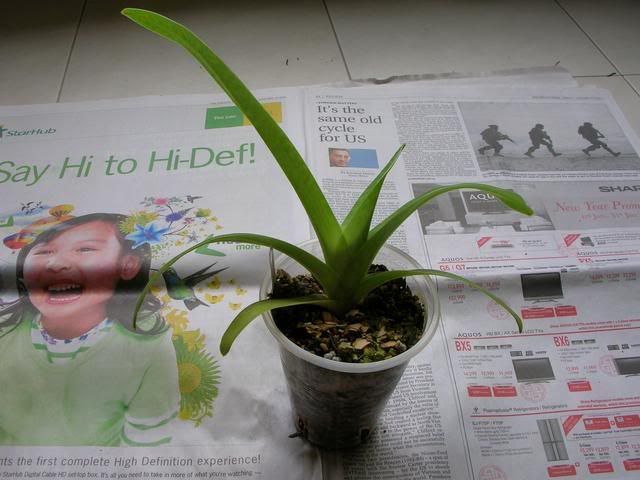
Here's a middle sized Paphiopedilum primulinum seedling which is getting a bit too big for it's pot. My own rule is to try to compact the root ball but the leaves should not be 2/3 longer than the diameter of the pot. So this plant is a bit too big liaoz.
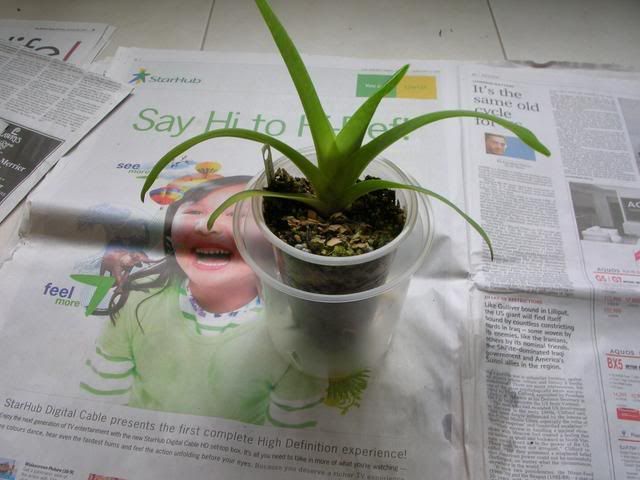
Select pot big enough for the plant. Usually I'll pick one 1-3cm in diameter bigger. Too big means too much media and a higher chance of waterlogged media. Also it may mean media wastage - rate of media rotting > than rate of media utilisation (root penetration) by the plant.
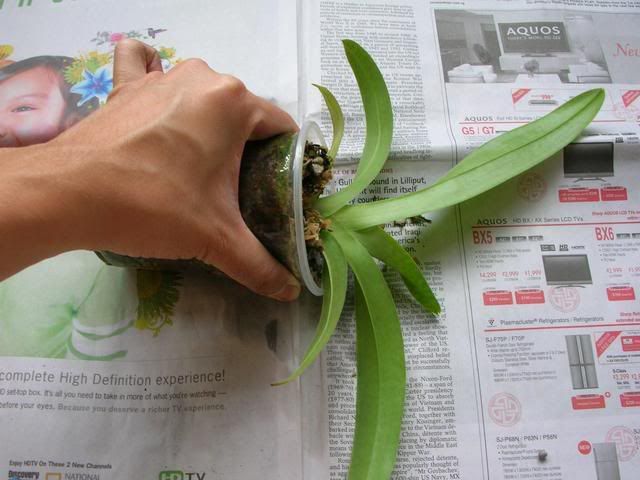
Dislodge plant from pot by gentle squeezing - don't squeeze until pot gets plastic deformation and the roots in the pot start snapping!!!! GENTLE PLEASE.
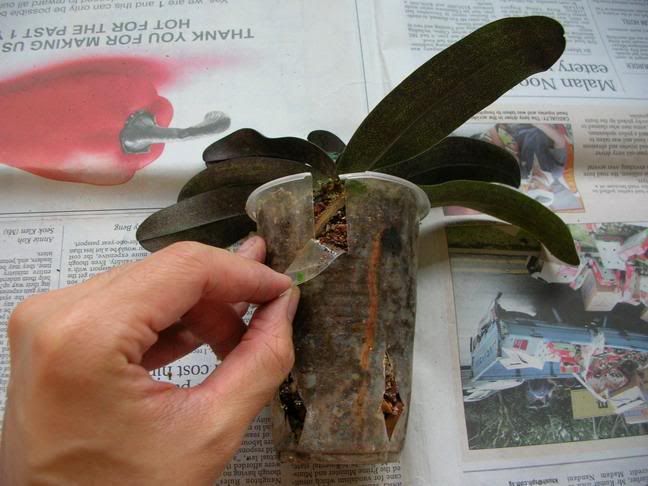
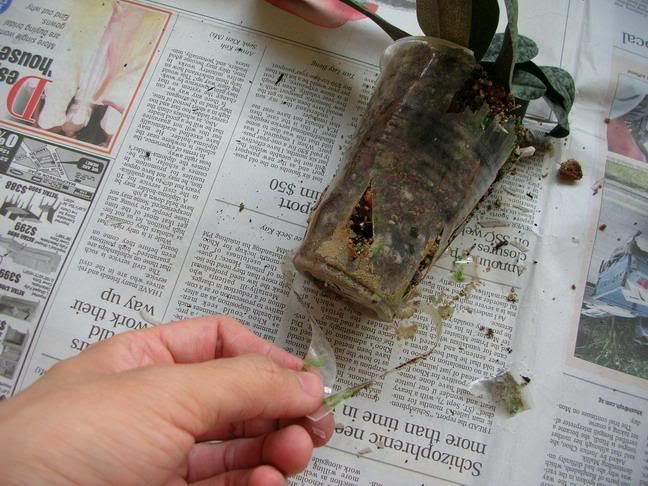
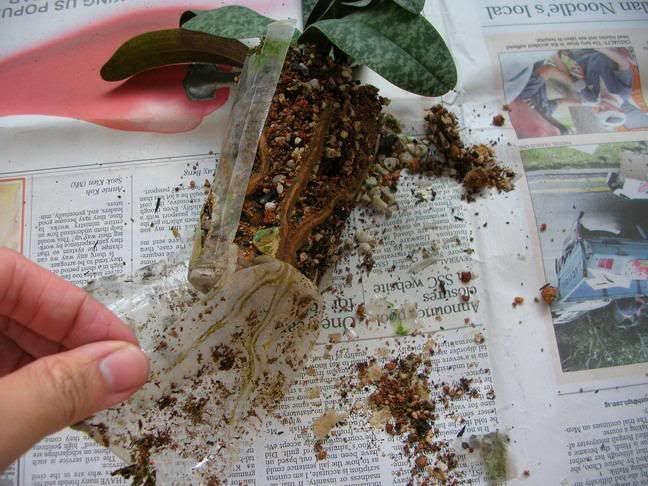
Alternatively, you may want to make 4 incisions at the edge of the pot. This will help to facilitate the peeling off of the disposible plastic "pot" (it's a modified drinking up actually). Just simply snap the edge of the pot and peel down 2 strips of pliable sides so that you'll get 2 halves which can be simply opened.
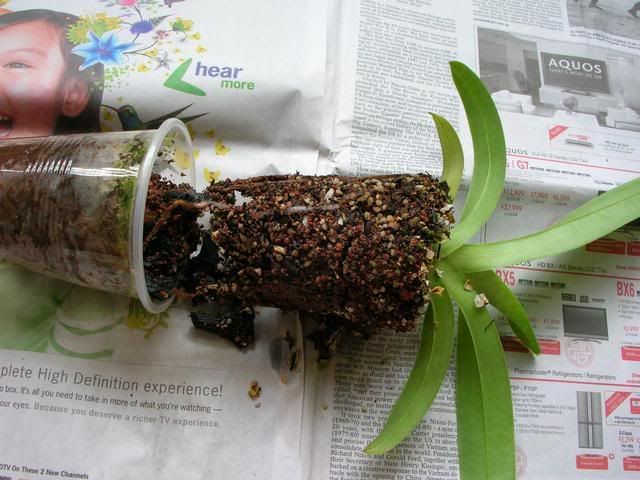
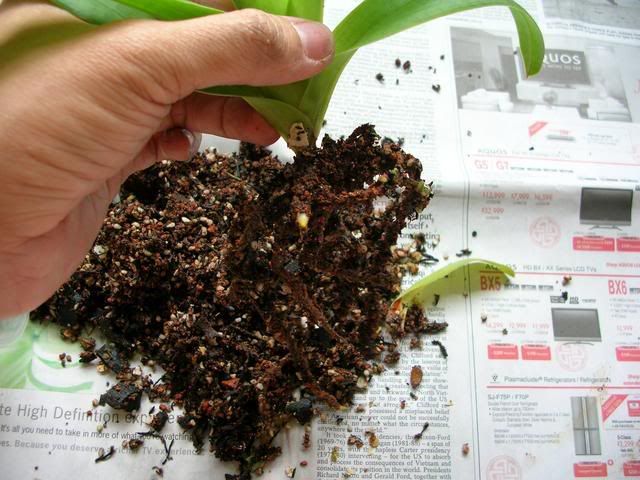
Once the plant is out of the pot, gently shake off ye olde media. Some people will repot using the old media but I've another view. Most Paph spp. like slightly basic media and the old media usually has decayed to something acidic and salty - not so good for the plant. I avoid washing the roots because I do not want to cause a drastic electrolyte shift in the roots and may end up damaging the roots due to the chlorine in the water.
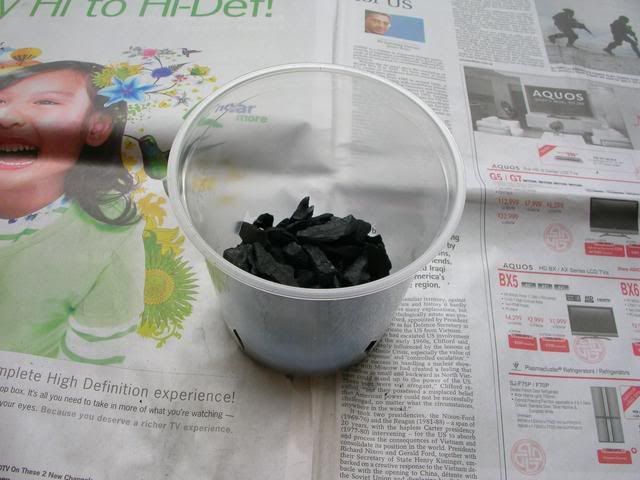
Crocking material is very important for Paph spp. A lot of people will repot these plants straight into a rich moist media and forget to cater to drainage. Most Paphs are in a special class of their own - they are not true terrestrials but really humus epiphytes or humus lithophytes - just a layer of humus on top to keep the root ball moist. A variety of crocking materials can be used - hydroton, charcoal, diatomite, broken bricks, broken pots, styrofoam chunks, etc. Some will fill a pot 2/3 with crocking materials, but given the dry dry apartment I am in, 1/3 would be more appropriate.
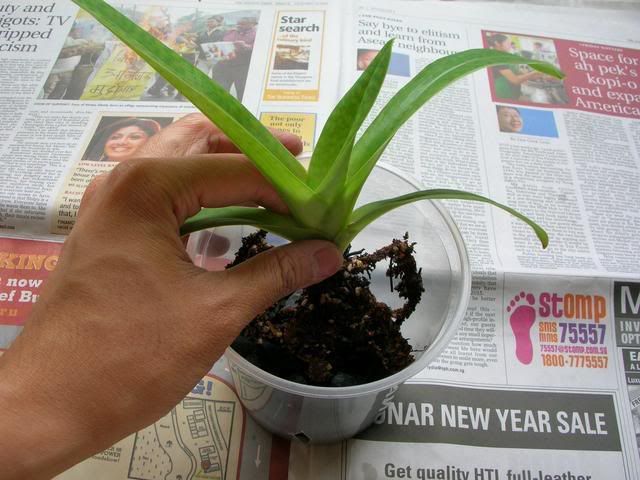
Position plant comfortably in the pot with one hand and start filling media with the other hand. If you see any new shoot, take care not to damage it and also it would be alright to have the old parent plant leaning towards oneside of the pot and the neew shoot having more space to grow. However if there is no sign of shooting, position the plant centrally so that any shoots growing will not be impede by lack of potential growing space.
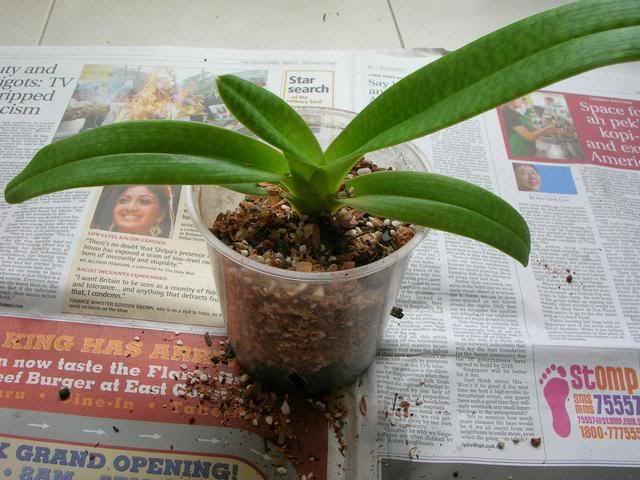
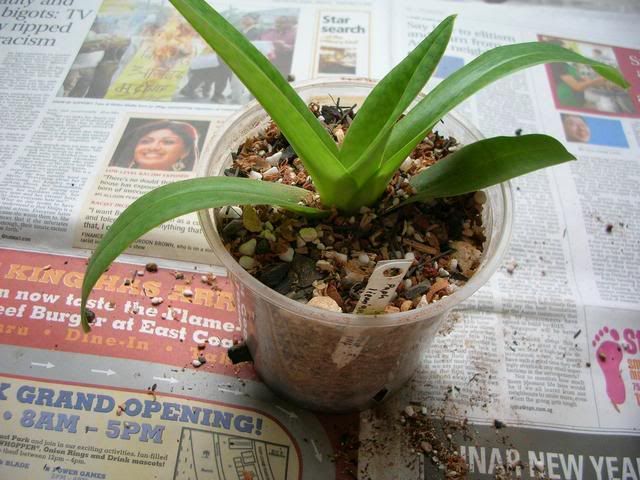
Fill them up and voilá! Gently pet down media so as not to compact it but make sure it is firm enough to hold the plant in place. If you compact the media too much there may be lack of air spaces in it and it will also cause the roots to grow slowly due to the hard compacted media.
Your initial watering would best done by patient mist spraying. If you dump copious amounts of water directly, it may cause compaction of the media and force all the air from the media out.
Growing Paphs from flasks is easy - you'll just have to know what grows well in your climate.
Support ex-situ conservation!!! - Does not apply if you bought jungle plants =.=
 - randomn thoughts that cross my mind.
- randomn thoughts that cross my mind.
2 comments:
The plant that you show repotted at the end is burried Very deeply - chances are it will get crown rot almost immediately if left potted like that...
It really depends on your potting mix. if your potting mix tends to stay wet on the top then starts to grow algae, i'd say saiyoh nara to the plant.
But then again, cochlopetalums are super hardy plants - a bit hard to kill.
I find paphs a tad unique - some of them have very weak root and plant joints that may cause devastating breakage with little force exerted - burying slightly deeper prevents such nonsense from happening ^^
Post a Comment